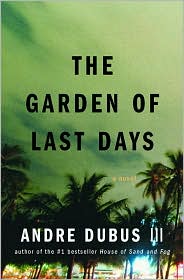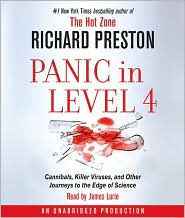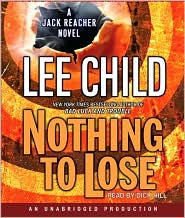Friday, July 04, 2008
Fonts
The independent, feature-length documentary Helvetica tells the story of this ubiquitous modern font while also providing a sense of the evolution that's occurred in typeface, from the messy, silly busyness of design of the 50s, to the modern period characterized by Helvetica everywhere, to the post-modern period of illustrated fonts, and back to a rebirth of Helvetica. Fascinating if you're into that sort of thing.
Here are a couple other fun font items:
Thursday, July 03, 2008
Interpreter of Maladies

Interpreter of Maladies by Jhumpa Lahiri was a book club pick. It’s a collection of nine short stories, each touching on the experiences of immigrants or first-generation Americans. It won the Pulitzer for fiction in 2000, as well as a PEN/Hemingway award. Lahiri is also the author of The Namesake, which was made into a movie (pretty faithful to the book and a good movie) released a year or two ago.
Minnesota bridges
Wednesday, July 02, 2008
The Assassination Tour
Last night I got to the point where JFK's body has arrived back in DC and Oswald has been picked out of 2 line-ups. And then the thought hit me - why is Dealy Plaza such a big tourist spot, but where Oswald lived or where he was finally captured that day not? My first thought was that perhaps those locations no longer exist. Perhaps the house he lived in has been torn down; perhaps the movie theater is long gone. But one would think that something like that, of historical value, wouldn't have been. Yet, living here, you never hear about or read about tours of these places. I've been here since 2000, and I've never been to Oak Cliff, the part of Dallas only 4 miles from Dealy Plaza that Oswald lived in, shot a policemen and was captured in.
So this morning, with the book as my very detailed guide, I retraced the movements of Oswald from the School Book Depository to the Texas Theater. And I was amazed that most all of the places mentioned in his trek are still there! After leaving the building, he got on a city bus (I found the intersection); after riding on the bus a few blocks, he got off and got into a cab across the street from the Greyhound Bus station (it's still there); the taxi took him from the bus station to Oak Cliff and dropped him off a few block from where he was living (I took the exact route and at one point, sitting at a stop-light, you can see the window from where he was shooting - it was freaky); the house he was living in is still there (with cars in the drive-way and nicely kept up, so obviously someone is living there) and there are 2 alleys running behind and to the side of the house that you can drive down; from there I went to the intersection where he was approached by the policeman he then shot. Though no one knows the exact route he took from his boarding house to that intersection, you can guess as to how he got there, trying to stay off major streets; from there he walked down to a major street, turned and headed along until he reached the Texas Theater. On route, as mentioned in the book, a Texaco station, a library and a church play a roll in the search for him - all still there, although the Texaco station isn't a gas station anymore, but the building is still there. And then the theater itself - still there. It was the only location that had any reference or mention of the historical value it has. It is being renovated and they have pictures on the window of the ticket booth of the theater taken that day. Swarms of police. The marque of the films being shown that day.
I am very, very surprised that to my knowledge, there isn't a tour or something that takes you to these locations. It is a short easy drive from Dealy Plaza. You can easily get to and walk around all the places in Oak Cliff. And other than the pictures at the theater, not one mention of the significance of these locales. Maybe I should start a tour - or perhaps, there isn't much of an interest. But I would think that if you were interested enough to go to Dealy Plaza and the 6th Floor Museum, you would be interested in this as well.
I have one more location to try to see. The house where Mrs. Oswald was living in (she didn't live with Lee Harvey - they only were together on weekends). This house, which the address is given in the book, is in Irving. That will be my quest tomorrow.
The Garden of Last Days

I was reading Parade magazine one Sunday and in the Recommended Reading section, this novel was written up. I wasn't that interested in it until the brief article used a bullet-proof phrase that will hook me every time - 9/11. The novel is set in Florida a few days before 9/11 and chronicles the seemingly unrelated lives of 4 people. I didn't care for writing style ( not much dialogue, mostly thoughts and actions of the characters) and I thought the inter-connections of the characters would be less transparent. Perhaps if I hadn't read about it beforehand, that might of made a difference. When I finished it, I was very under-whelmed. Maybe all the discussion between the fanatic Muslim and the stripper he spends most of an evening with was just too "deep" for me, though I doubt it.
Panic in Level 4: Cannibals, Killer Viruses, and Other Journeys to the Edge of Science

Nothing to Lose

As I believe I have mentioned before, I will give Michael full credit for turning me onto the Jack Reacher series. I'm not sure what drew me to the Reacher character. I think it's the combination of being totally "off-the grid" and his "a bit over the top" tough SOB persona. I've read that Ben Affleck has been mentioned as the screen version of Reacher when one of these novels is made into a film. I don't quite see it ( I don't think he's tall/big enough), though I don't know who else would fit the bill.
As for Nothing to Lose, I enjoyed it of course. The plot was a bit far-fetched for me, especially based on the other Reacher novels. Childs' version of the twin-cities was just too out there. A great summer read though.
I would think that Michael and T have read this by now. If so, would be interested in your comments.
The Aquariums of Pyongyang: Ten Years in the North Korean Gulag

Monday, June 30, 2008
Paul Johnson on his favorite lecturers
The best lecturers I have ever heard were, in order, Kenneth Clark and C.S. Lewis. Clark I heard give two courses, one on the painter he called 'Rumbrunt', the other on 'Tintorette'. Both were perfection. Lewis was close to that, and could fill the hall at Magdalen to overflowing, the girls squatting at his feet and showing flashes of nylon-tops. A.J.P. Taylor could fill the same arena but he attracted mainly men, so that the dimension of potential pick-ups, which was such a feature of Lewis's performances, was lacking. By contrast, old Tolkein was a poor lecturer, dull and hard to hear, keeping his head down, nose to text. He was almost as bad as Jean-Paul Sartre, towards the end, the worst lecturer I ever heard, becoming almost inaudible, head sinking, and interminable so that the room gradually emptied. Hope that never happens to me.
Sunday, June 29, 2008
Dinner at Mr. Jefferson's
Salad and Dressing (Serves 6)
2 tbsp wine vinegar or tarragon wine vinegar
salt
whole black pepper in a pepper mill
6 to 8 tbsp extra virgin olive oil
6 cups mixed salad greens, such as seasonal lettuce, spinach, endive, radicchio, and cress
fresh herbs such as sweet basil, marjoram, mint, and summer savory [what is that?]
6 small scallions, trimmed
1. Put the vinegar, a small pinch of salt, and several generous grindings of pepper in a salad bowl and beat with a fork until the salt is dissolved.
2. Gradually beat in about 6 tbsp of olive oil, a little at a time in a steady thin stream, beating constantly until emulsified. Taste and adjust the salt, pepper, and oil as needed.
3. Add the greens and herbs to the dressing and toss lightly to coat. Taste and adjust the seasonings again, toss and arrange the scallions around the edge of the bowl.
Apparently the vanilla ice cream really wowed 'em as it was served inside a hot pastry giving it the illusion of having been somehow cooked. Recipe too long to type up.
Of course, the book was about the Great Compromise reached by Jefferson, his buddy Madison and the dread Hamilton: the assumption of the revolutionary debt by the federal government and the placement of the Capitol on the Potomac rather than permanently in New York of Philadelphia. I'm taking the author's book on Jefferson's Louisiana Purchase to (My Own Private) Idaho in a couple of weeks.
